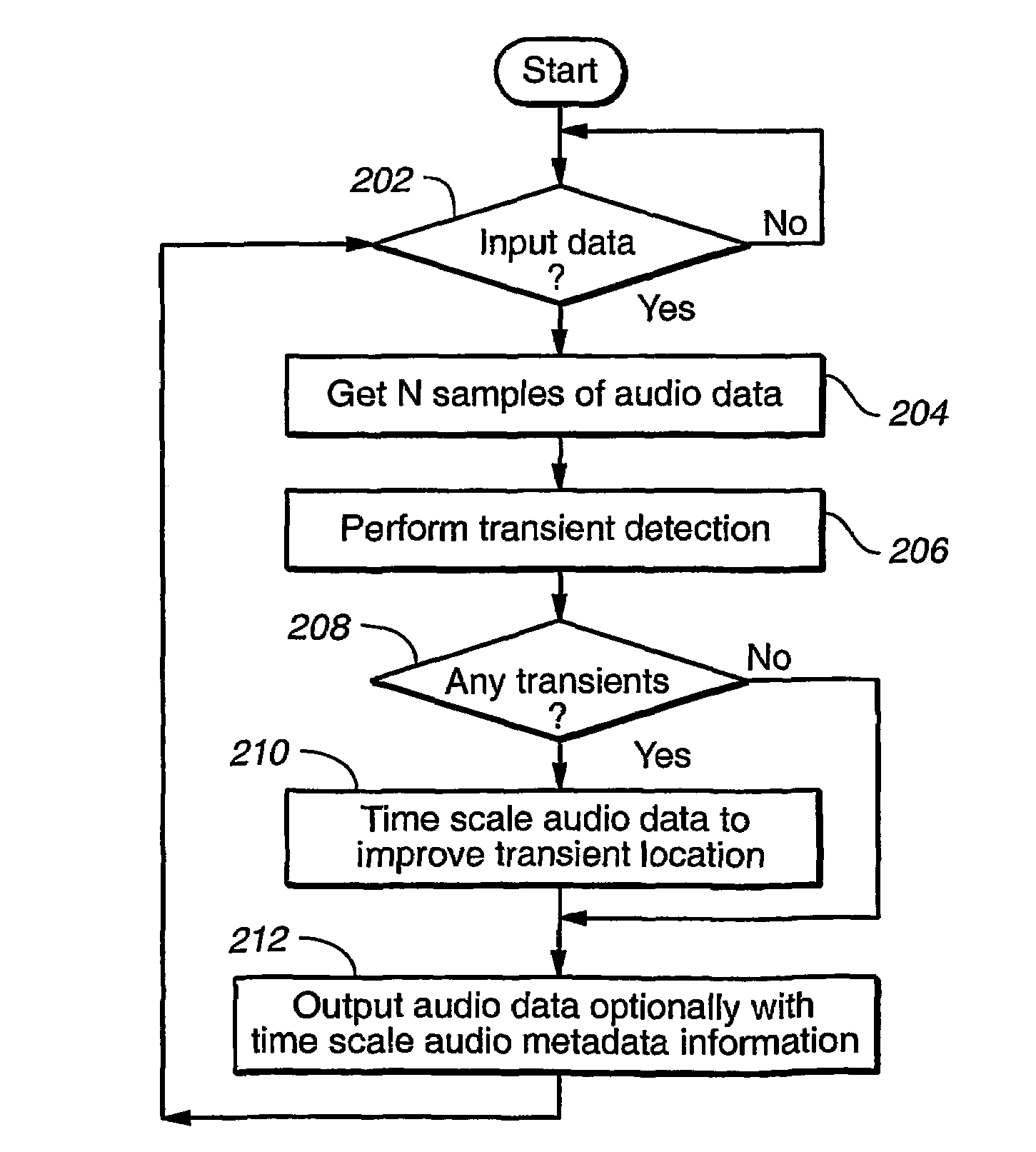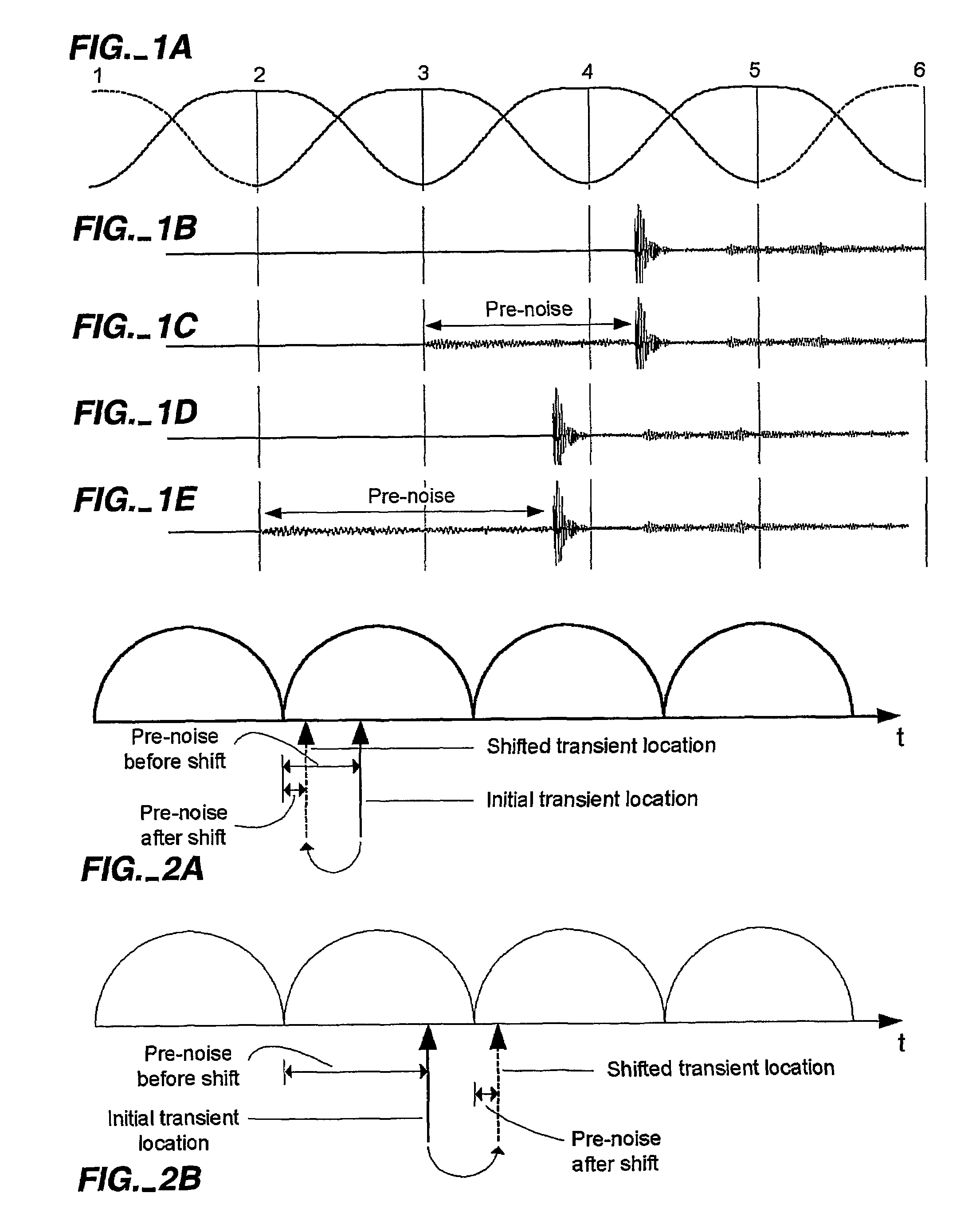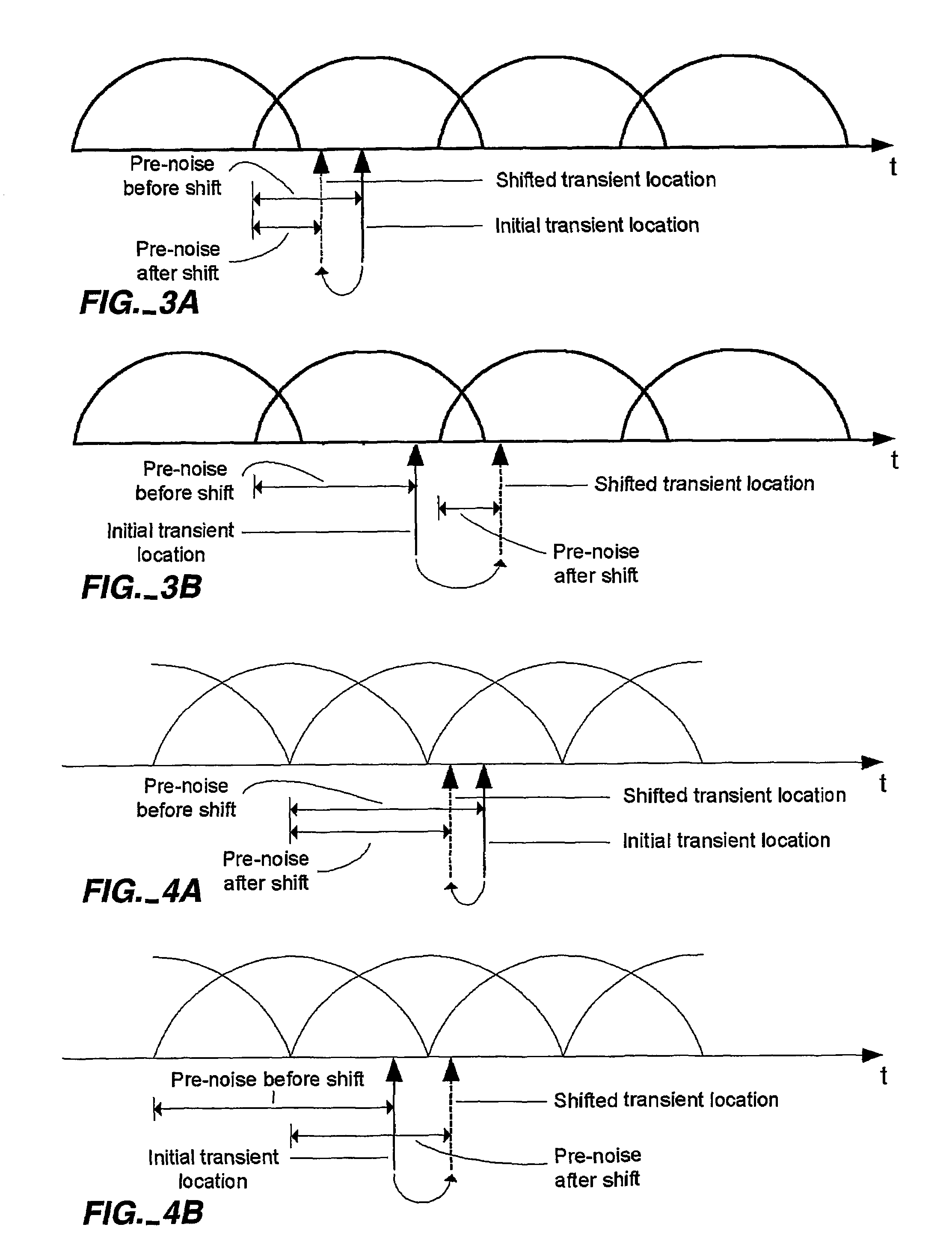Transient performance of low bit rate audio coding systems by reducing pre-noise
a low bit rate audio coding and transient performance technology, applied in the field of high-quality, low-bit rate digital transform encoding and decoding of information, can solve the problems of increasing the length of the transform, the most objectionable effect, and the unsatisfactory distortion products outside the critical bandwidth of the ear, so as to reduce the time duration of the distortion artifact, the effect of reducing the distortion artifa
- Summary
- Abstract
- Description
- Claims
- Application Information
AI Technical Summary
Benefits of technology
Problems solved by technology
Method used
Image
Examples
Embodiment Construction
Time Scaling Pre-Processing Overview
[0074]FIG. 6 is a flow chart illustrating a method for time-scaling audio prior to low bit rate audio encoding to reduce the amount of transient pre-noise (i.e., “pre-processing”). This method processes the input audio in N sample blocks, where N may correspond to a number greater than or equal to the number of audio samples used in the audio coding block. Processing sizes with N greater than the size of the audio coding block may be desirable to provide additional audio data outside of the audio coding block for use in time scaling processing. This additional data may be used, for example, to sample number compensate for time scaling processing performed to improve the location of a transient.
[0075]The first step 202 in the process of FIG. 6 checks for the availability of N audio data samples for time scaling processing. These audio data samples may be from, for example, a file on a PC-based hard disk or a data buffer in a hardware device. The au...
PUM
 Login to View More
Login to View More Abstract
Description
Claims
Application Information
 Login to View More
Login to View More - R&D
- Intellectual Property
- Life Sciences
- Materials
- Tech Scout
- Unparalleled Data Quality
- Higher Quality Content
- 60% Fewer Hallucinations
Browse by: Latest US Patents, China's latest patents, Technical Efficacy Thesaurus, Application Domain, Technology Topic, Popular Technical Reports.
© 2025 PatSnap. All rights reserved.Legal|Privacy policy|Modern Slavery Act Transparency Statement|Sitemap|About US| Contact US: help@patsnap.com



